ENTERPRISE AUTOMATION: A CATALYST FOR INNOVATION.
PART 1: AUTOMATION INTRODUCTION AND READINESS
We ask Alexa to set a timer for 15 minutes while we cook. Waze finds the optimal route for our daily commute. Netflix recommends the perfect, binge-able drama when we’ve just finished a show. Automation is a part of our daily lives, leading to an expectation that customers have for businesses.
What is automation exactly? At its most basic, automation involves software commands based on business logic and mathematical formulas. Key automation capabilities include robotic process automation, workflow automation, adaptive case management, machine learning, conversational UX, decision management, predictive analytics and artificial intelligence.
Organizations who seek to achieve enterprise automation must create a business-aligned enterprise automation strategy. We can leverage automation to maintain elevated service when interacting with customers, but we also can apply automation to increase the effectiveness and efficiency of our organization. When the term “disruptor” is used, it regularly refers to an organization that is able to reduce friction in the business-to-customer value exchange through new solutions. More and more in today’s digital economy, these disruptors are leveraging a variety of automated technology solutions to leapfrog traditional competitors.
Amazon’s scale and operational disruption would not be possible without the automation needed to offer customers its Prime delivery, based on proximity to the user, algorithmic inventory management, capacity in its delivery fleet, and cost optimization of the item.
Leading organizations in healthcare and financial services are leveraging automation across their enterprise to eliminate high-cost, manual processes, accelerate the movement of work across their operation, and make smarter, data-driven decisions.
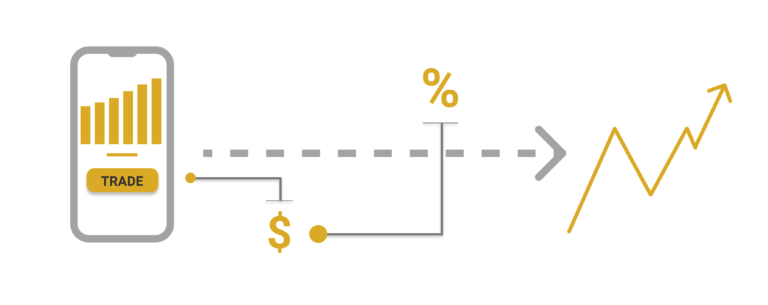
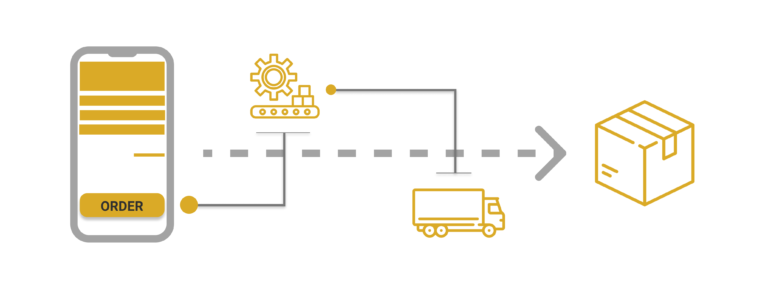
The benefits of automation create expectations for customers, stakeholders, and employees; the effectiveness of automation allows us to maintain them.
The difference between a small-to-midsize operation and an enterprise is often the economy of scale at which an organization is able to operate. To take advantage of economies of scale, organizations have to understand where they can reduce operational inefficiencies, minimize risk and lower cost to create a sustainable business through expanding margins with increased, reliable throughput. One way that modern organizations have found to accomplish this is through the adoption of enterprise automation capabilities across their value chain.
Enterprise automation is increasingly considered a key enabler of digital transformation that drives market disruption, or combats ongoing disruption, for many organizations across various market sectors. Healthcare and Financial Services firms are two sectors that have significant automation opportunities due to the volume of paper-based, manual processes in their value chain.
Enterprise automation seeks to automate business processes and workflows across business functions within an organization’s value chain, as well as across IT functions, including application engineering, operations and security.
Process and workflow management are essential in understanding how best to create visibility in the organization, create ownership around processes, and iterate and improve on processes. For example, if a logistics organization is to grow, it needs to understand every moving part of its logistics infrastructure and processes. To further the operational efficiencies of sound enterprise processes, the introduction of business process and workflow automation serve to reduce manual, inefficient processes and transform them to automated workflows and processes that are cost-optimized, scalable and dependable.
WHAT IS AUTOMATION?
| Data Science / Predictive Analytics | A broad and exploding field, large data sets are the fuel for algorithms and complex statistical models to crunch past and similar performance in a business scenario to predict and categorize future results. Automation is applied throughout today’s modern data management discipline. |
| IaaS | Infrastructure-as-a-Service is how most people think of cloud computing, where elastic cloud infrastructure scales automatically based on demand and usage. |
| IaC | Infrastructure-as-Code is the means by which cloud infrastructure is automatically provisioned on demand by ways of pre-coded infrastructure architecture. |
| DevOps | A joining of the traditional IT departments “Development” and “Operations,” DevOps is the automation around managing and deploying code including automated testing, validation, and promotion of packages of code. |
| RPA/IPA/DPA | Robotic, Intelligent, and Digital Process Automation is the automation of tasks using simple, AI-based processes and workflows in place of manual (human) process and workflow management. |
| Security | Security automation includes services like Splunk and Amazon Guard Duty where measures are taken to protect applications based on repetitive activity (ex. Preventing a DDOS by blocking repeated pings from a set of IP addresses, quarantining an account attempting to login from an irregular location). Security automation tools and use cases abound, and continue to rapidly grow. |
| Virtual Assistants | Connecting a knowledge base naturally to user queries based on keywords and natural language processing. |
| Internet of Things (IoT) | Managing hardware through remote controls through data. Two practical examples: managing the smart bulbs in your house based on your behavior, or heavy machinery cooling based on demand. |
CLOUD AND CLOUD AUTOMATION
In today’s business world, part of the reduction in risk and cost and expanding margins often comes from switching from on-premises infrastructure to cloud infrastructure. Using partners like Azure, Google and AWS, countless organizations around the world have made the switch to cloud infrastructure in order to take advantage of benefits like on-demand computing, elastic scalability, zero interruption failovers, integrated devops, and limitless storage. Working with these partners and understanding which benefits and features are right for you can lead to enormous cost savings.
One of the many features of cloud infrastructure is cloud automation. Cloud automation is the ability to leverage cloud computing to run processes on anything from managing the security of your applications, automated auditing and reporting, marketing and acquisition campaigns, and any number of processes that can be automated using functions, programs, or applications run on the cloud. These processes are often automated to improve focuses like security, costs, speed-to-market, and customer satisfaction.
The use cases are endless and the costs are managed using cloud computing services, but how can you maximize what you choose to automate?
PROCESS MANAGEMENT AND STRATEGY
Before applying new technology across your value chain, do you understand your baseline performance and key measures of success?
Process management is essential in understanding how best to create visibility in the organization, create ownership around processes, and iterate and improve on processes. For example, if a logistics organization is to transform through automating its operation, it first needs to understand every moving part of its logistics infrastructure and processes. Automate after your processes are measured, understood and the biggest opportunities to apply new technology are identified.
The first step toward a well-managed process organization is to audit major processes. This does not mean stopping all work in an effort to document every step of every process, but adopting a Journey Mapping or Business Process Management (BPM) discipline to build a baseline for how you can document processes using information like:
- Precursors and Dependencies – Do any other processes need to be completed first, or are only certain roles able to execute the process?
- Negative effects and fail states – How do we know the process has failed? What is the impact of this process failing to others?
- Expectations and performance – What do we expect of this process today in measurable terms? What is our baseline for performance in the process according the customer of the process?
By auditing the steps in a process and understanding information like the above, you can build a path to better managing the process through defining KPIs, ownership, and a shared understanding of its place in the larger organization.
In the below example of a documented process–High Value Customer Transfers–information is focused on dependencies and the expectation for the customer. For High Value Customer Transfers, a bank wants to ensure it’s handling its customers who have been with the bank for a set amount of time or who have a significant stake in the bank efficiently, passing them to second level support as quickly as possible for personalized service. Using a process diagram to visualize, we can focus on the pain points of identifying the caller as a High Value Customer that takes up to 6 minutes of the phone call; this can lead to an impacted perception of the bank for the valuable segment.
But don’t worry, further on in this article, we will show how automation can solve this customer-experience challenge!
Examples of High Value Customer Transfers
- Customers who have been with the bank for over 5 years or have a balance over $10,000 should receive prioritized support.
- Time to second level support should not exceed 30 seconds
- Call forwarding and management is dependent on customer entering customer account number, last 4 of SSN correctly
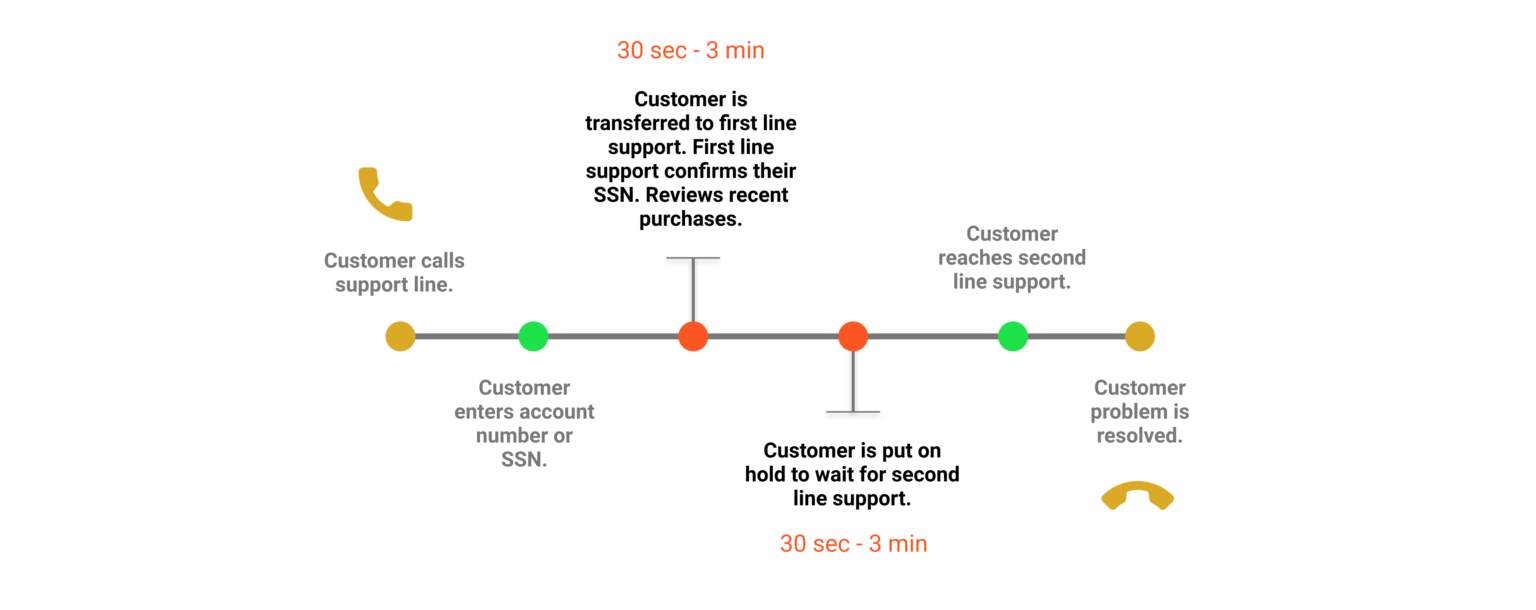
In this High Value Customer Transfers example, we see that the process of bringing the HV customer from first line support to the intended second line support can take up to 6 min largely due to a need to confirm the customer’s information prior to transfer.
While you’re documenting these processes, it’s important to define a strategy for how process management and automation should be used in your organization; is automation meant to reduce costs, increase sales, manage security, or other use cases? If automation is needed for all of these use cases, which is the highest priority?
PROCESS GOVERNANCE AND MANAGEMENT
With processes now audited and a strategy defined, it is important to create governance around these processes.
As with any application in your organization, there needs to be ownership over the transformation of a process and tracking where and how automation and improvements can be made with minimized risk and no impact to vulnerabilities or cost. We’ve all either read headlines or witnessed ourselves when a site we want to visit goes offline or is breached due to a missed or changed process.
While the eventual goal is to modernize processes through automation, understanding the fail state, dependencies, and KPIs is essential in understanding the capacity for change and potential methods for diffusing risk in change. In some cases, organizations still rely on old technology or governance for some processes because they cannot be interrupted for re-platforming or development.
Knowing where process pain points are will allow you to focus on peripheral processes and understand where deliberate change can be made.
AUTOMATION ARCHITECTURE AND ENGINEERING
Now that you’ve built an understanding of processes in the organization, where to focus on change, and how to manage that change, it’s time to select or build the infrastructure for automation.
Depending on the prioritized automation area you are focusing on first, such as automating IT operating or business processed, you will need to consider the appropriate strategy for implementation and the tools or technology required. Tools may include some combination of process robotic automation, workflow automation, data analytics and/or machine learning products from software vendors or services from cloud providers.
In the second case, automation can be managed directly as part of your cloud features (using tools like Microsoft’s Automate or AWS’s Simple Workflow Service), or can be run as processes on your cloud infrastructure (as deployed code, scripts). While using workflow management and scripting to create custom automation is an option, cloud partners also have intuitive tools for common use cases and RPA software vendors have robust products that work together with cloud services for data analytics and artificial intelligence solution capabilities.
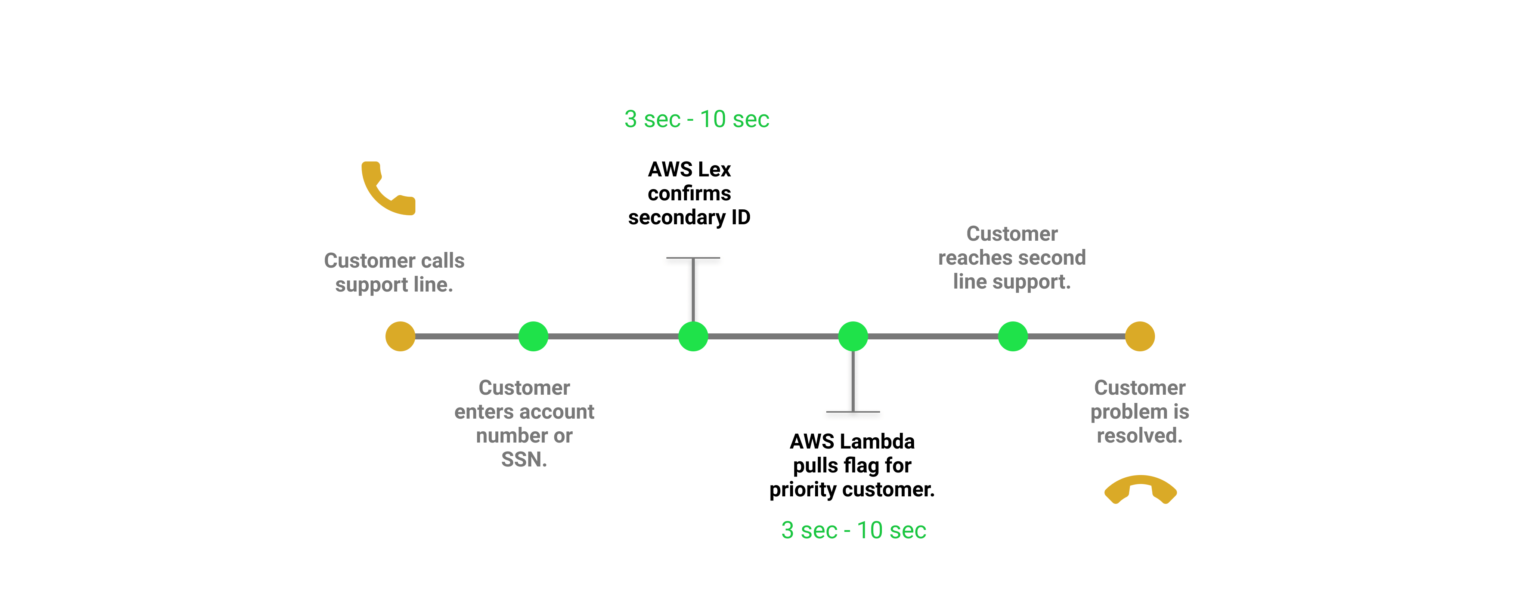
Using AWS Lex for voice automation, and AWS Lambda to automate data queries to your customer data warehouse, you can bypass the need for a go-between question from an associate before redirecting HV customers to second line support.
For any use case, cloud partners can either modify an existing process or adapt your custom process, and scaling that process is a matter of understanding the demand, frequency, and scale.
PROCESS ANALYTICS AND METRICS
After defining process baseline performance and dependencies, it’s important to know where processes can improve and how they’re performing.
Any automation or efficiency sought for a process should include a targeted metric to improve, and any deployed solution should include a method for tracking that improvement. RPA vendors and cloud providers offer data visualization tools that can link directly into applications and deployed processes, allowing you to create process dashboards to track improvement and increase visibility. Tools like Google Data Studio, Tableau, PowerBI, AWS Quicksight, and other tools allow you to measure each process.
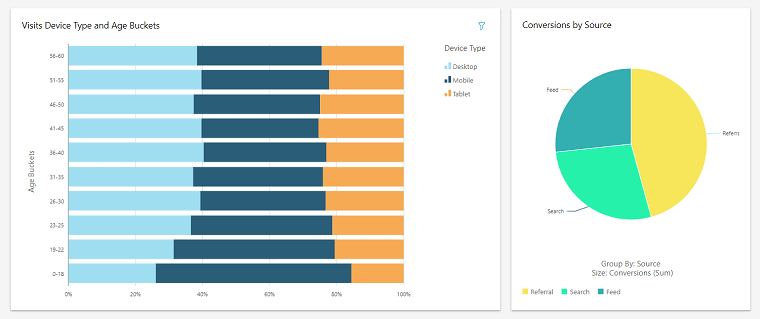
This example AWS Quicksight dashboard is focused on user demographics, and whether or not they’re converting on marketing funnels based on their source. Find more information on setting up Quicksight dashboards.
As your organization moves further into process improvement and automation, maintaining visibility is essential in growth and tracking cost savings and reliability.
CONCLUSION
Automated technology solutions have already transformed much of our day-to-day lives, as well as many business sectors. There is great opportunity to leverage automation within an enterprise — the critical starting point is to first understand your business capabilities, core processes and customer needs.
Taking a business-value lens to automation exploration and implementation will make the technology stage simple. And that’s what we’ll delve into next in this series: Deeper explanations of the primary automation technologies and use cases.
